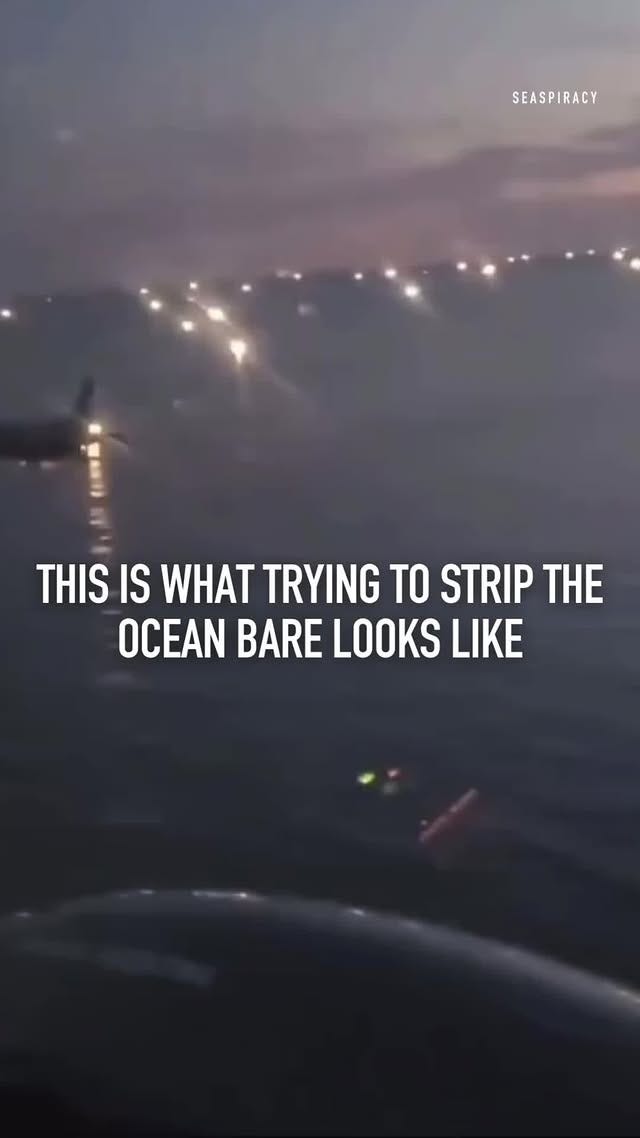A few days ago, we posted a video showing over 300 Chinese fishing vessels swarming Argentina’s waters—and it went viral. The reaction was overwhelming, exposing just how little the world knows about this crisis. But this isn’t a new problem. It’s been happening for years, and the consequences are devastating.
Is this just another case of distant-water fleets operating beyond the reach of regulation? Another example of industrial-scale fishing depleting marine life faster than it can recover? Or is this part of a larger, more troubling pattern that threatens entire ecosystems, economies, and even human rights?
The world saw the video—now, we’re breaking down the full story.
China’s fleet: A global force of destruction
China operates the largest distant-water fishing fleet in the world, with thousands of vessels spread across international waters. These ships venture far beyond China’s borders, targeting regions rich in marine life. Argentina’s waters are one of their prime hunting grounds.
Every year, around 400-500 Chinese fishing vessels line up along Argentina’s Exclusive Economic Zone (EEZ), just outside the legal boundary. Many of them are giant squid jiggers, which deploy powerful lights to attract squid at night, depleting a species that is crucial to the ocean’s food chain. Some ships even disable their tracking systems to slip into Argentine waters undetected.
The South Atlantic is not the only region suffering. Chinese fleets have been caught illegally fishing off the coasts of Ecuador, Peru, West Africa, and even the Galápagos Islands. Their fishing activities often involve illegal, unreported, and unregulated (IUU) practices, further pushing marine species toward collapse.
How we got here: A crisis decades in the making
This situation didn’t happen overnight. Overfishing, weak enforcement, and a lack of international cooperation have allowed China’s fleet to grow unchecked. Here’s how we arrived at this crisis:
Decades of overfishing in Chinese waters
China severely depleted its own fish stocks in the Yellow Sea and East China Sea due to relentless fishing pressure. Facing resource collapse, they expanded globally in search of new waters to exploit.
The rise of the distant-water fishing fleet
In the early 2000s, China massively subsidized its fishing industry, encouraging companies to send fleets to foreign waters. Today, billions of dollars in government support fuel this global expansion.
Targeting Argentina’s rich waters
Argentina’s continental shelf is one of the world’s most productive marine regions, home to abundant squid, hake, and other commercially valuable species. This has made it a top target for Chinese fleets.
A history of confrontation
Argentina’s coast guard has seized and even sunk Chinese vessels caught fishing illegally in its waters. But with hundreds of ships operating at once, enforcement remains a challenge.
The Consequences: A Looming Ecological Disaster
If this continues, the impact will be catastrophic:
Squid populations—key to marine food chains—are collapsing.
Marine ecosystems are unraveling as predator species lose their primary food source.
Human rights abuses on Chinese vessels—including forced labor—are being documented at alarming rates.
The Time to Act Is Now
This issue is no longer hidden. The world is watching. If China’s fleet is left unchecked, the consequences will be irreversible. Governments must step up, enforce stricter regulations, and hold industrial fleets accountable.
We need to keep this momentum going. Share the video. Raise awareness. Demand action.
Because if we don’t act now, there won’t be a future left to protect.






